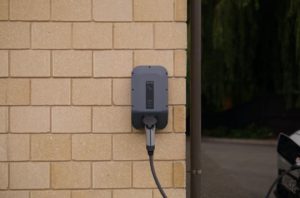An electric vehicle could be one of the best purchases you can make if you want to live a greener lifestyle. As well as ditching fossil fuels and the need to fill up your tank, you could save money by charging your car instead. But you also have to consider the issues that come with owning an EV. Being able to charge it is obviously something you need to consider. You have to have good access to charging points on the road and, ideally, you need to be able to charge your car at home too.
Before you purchase an EV, getting your home ready for it is smart. You want to make sure you have everything set up for charging and that you’ve ticked all the right boxes.
Research Costs
Start by checking out the costs for making the changes that you want to make. As well as working out a budget, you can check the grants that are available for installing an EV charging point. Putting in a charger is probably going to be your main cost, but you might also be looking at making some other changes. For example, you might want to make alterations to your garage or driveway. Don’t forget the ongoing costs too. How much will it cost you to charge your car and how often will you need to do it?

Image from Pexels – CC0 Licence
Get Your Drive or Garage Ready
If you’re getting an EV, you really need off-road parking to charge it. While it is technically possible to connect your car to a charging point if it’s on the street, it’s not a great idea. With the cable trailing across the pavement, it can create a tripping hazard. Some local authorities are going to have problems with this and it’s inconvenient for your neighbours. So take a look at your driveway or garage and make sure it’s ready for your car to sit there while it’s charging. Think about security and consider where to put a charger.
Check If You Have a Three-Phase Connection
EV charging can be made even faster if you can receive an AV charge of 11kW or 22kW. However, for this you will need a three-phase connection, which most homes in the UK don’t have. A three-phase power network has three live wires. This is what the majority of the country is served by, but most homes are only connected to one of those ways, giving them a single-phase connection. It is possible to upgrade from single-phase to three-phase, so speak to your energy supplier if you’re curious about its benefits.
Install an EV Charging Point
Of course, you will want somewhere to charge your car. Can you use a standard three-pin plug? Technically, yes, but it’s going to charge your car pretty slowly. You really need a dedicated EV charger. Make sure you look for an electrician with experience installing them to get yours installed properly. Remember that all EV charges must now be smart, meaning they can charge your car when there is less demand on the grid. You should also consider the difference between tethered and untethered chargers and make sure you get the right connector.

Image from Pexels – CC0 Licence
Find the Best Energy Deal
Once you’ve sorted the installation of your EV charger, you want to make sure you’re getting the best price for your energy. Having a smart charger will help, but you can also look at your energy provider and tariff to check if you’re getting the best deal. If your energy contract is coming to an end, see if your current provider can give you a better price. Alternatively, use a comparison website to compare different providers. This will help you see if you can get a lower price from another provider instead of sticking with your current one.
Know Where the Nearest Charging Points Are
Having your EV charger set up at home is obviously useful, but sometimes you might need an alternative. There could be a few reasons for this, from not being able to get onto your drive or a broken charger to just being away from home when you need to charge. Knowing where the nearest public charging points are located is useful if you don’t want to be caught short. You might find there are some at nearby supermarkets, petrol stations or shopping centres. Your workplace might also have charging points, so check there too.
Before you buy your electric vehicle, get your home ready so it’s prepared for when you bring your EV home.





